IBM Infoprint 1540, 1560, 1580 MFP Printer 4543



Fully refurbished with 90-day warranty
4543-101 39v0831
$1799.00
The IBM 4543 Infoprint 1540, 1560, and 1580 MFPs are all-in-one multifunction printers (MFP) that provide print, copy, scan, and fax functions.
The Infoprint 1540 MFP includes a 35 page-per-minute(ppm)(1) monochrome laser printer.
The Infoprint1560 MFP includes a 45 ppm, monochrome laser printer.
The Infoprint 1580 MFP includes a 55 ppmmonochrome laser printer.
The Infoprint 1540, 1560, and 1580 include a 55 sides-per-minute color capable scanner(2) with duplex and A3/tabloid media support designed to keep up with the demands of small and medium-size workgroups.
Note: (1) Exact print speed varies depending on document complexity, system configuration, software applications, driver, and printer status.
Note: (2) Exact scan speed varies depending on document attributes, system configuration, and user-selected settings.
Model Abstract 4543-001
The IBM 4543 Infoprint 1540 MFP Model 001 comes with a 625 MHz Freescale processor, greater than 20 GB hard drive, 256 MB of memory, duplex, 10/100Base TX Ethernet, parallel, USB ports, and prints 35 pages per mimute.
Model Abstract 4543-101
The IBM 4543 Infoprint 1540 MFP Model 101 comes with a 625 MHz Freescale processor, greater than 20 GB hard drive, 256 MB of memory, duplex, 10/100Base TX Ethernet, parallel, USB ports, and prints 45 pages per minute.
Model Abstract 4543-201
The IBM 4543 Infoprint 1540 MFP Model 201 comes with a 625 MHz Freescale processor, greater than 20 GB hard drive, 256 MB of memory, duplex, 10/100Base TX Ethernet, parallel, USB ports, and prints 55 pages per minute.
IBM Infoprint 1540, 1560, and 1580 MFPs provide the following benefits:
- Local and network print
- Network scan
- Copy
- Fax
- Automatic Document Feeder (ADF) with recirculating duplex capability
- A3/tabloid size flat bed
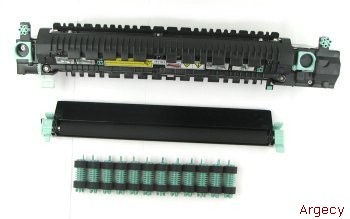 39V2613 | |
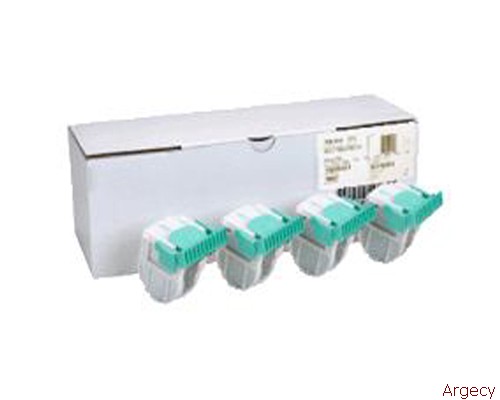 39V2323 | |
 39V0529 | |
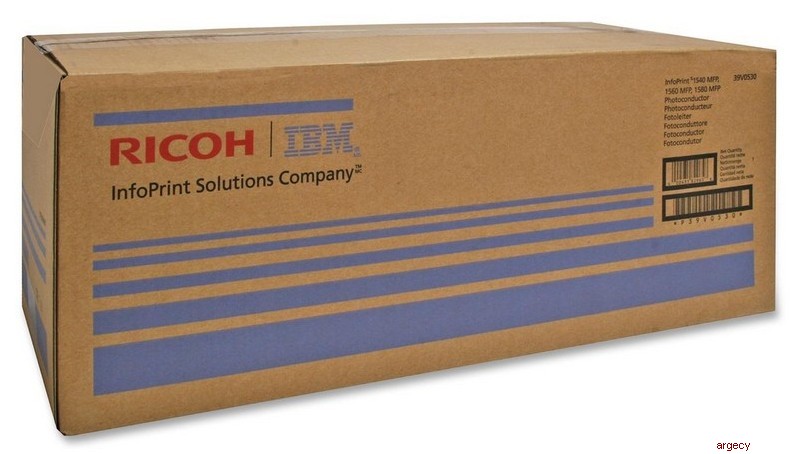 39V0530 | |
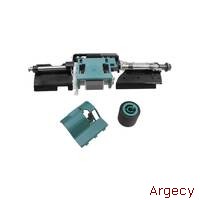 39V2700 | |
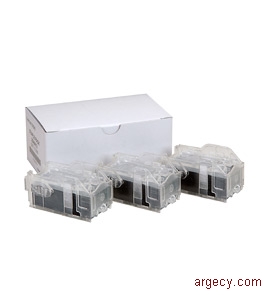 75p6997 | |
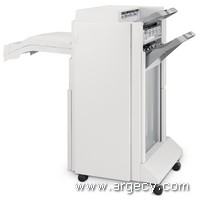 39V0945 | |
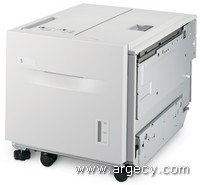 39V0924 | |
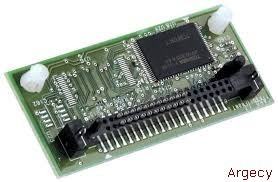 39V0875 | |
 39V0876 | |
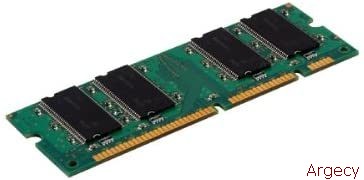 75P6986 | |
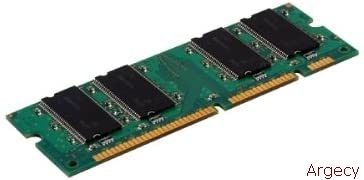 75P6987 | |
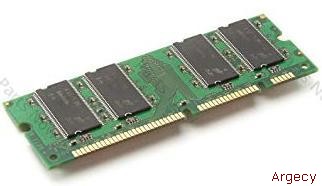 75P6988 | 75P6988 Infoprint Brand 512 MB DIMM New 75P6988 (New) Retired, no longer available: Contact for alternatives |
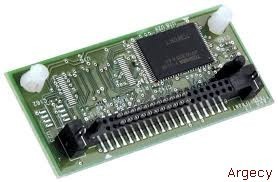 75P6989 | |
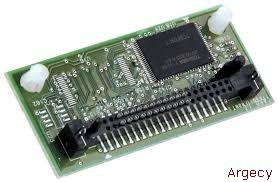 75P6990 | |
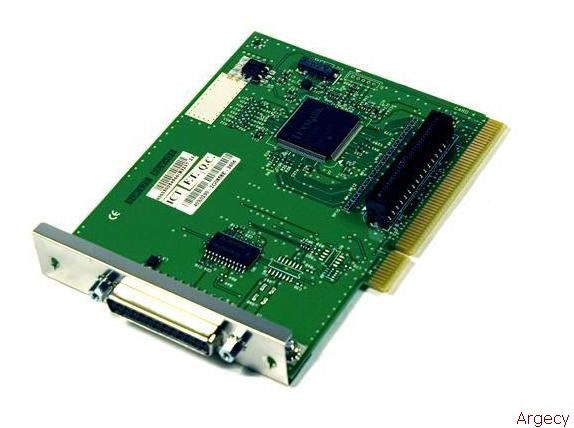 39v0326 | |
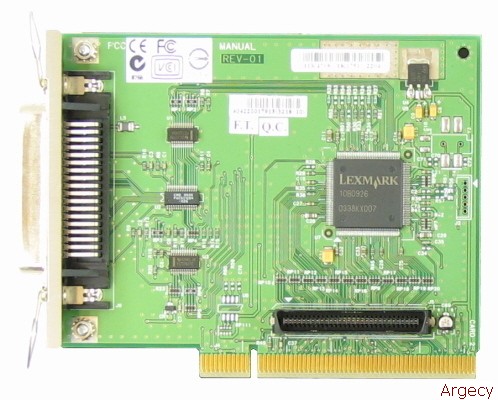 39v0327 | |
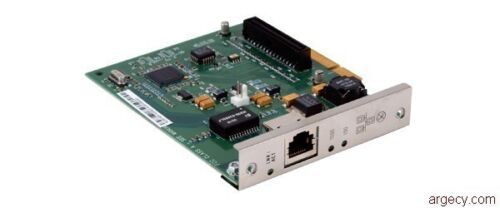 75p6992 | |
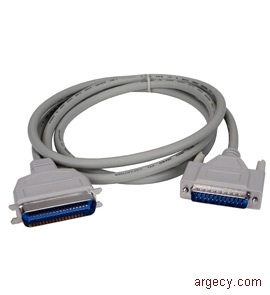 75P7029 | |
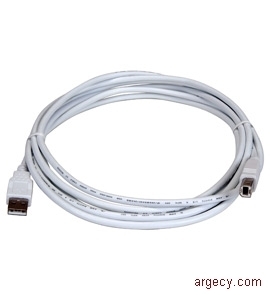 75P7030 | |
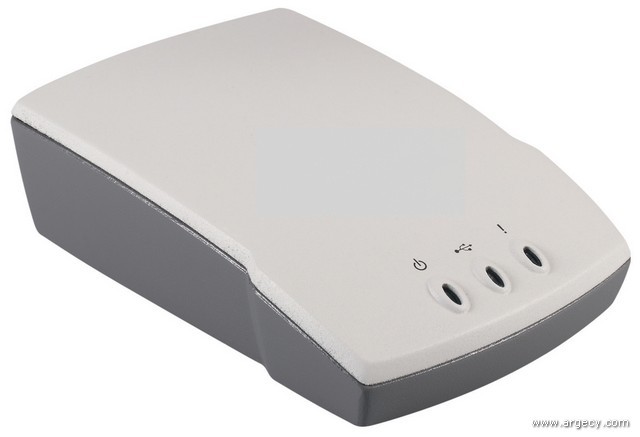 39V1524 | |
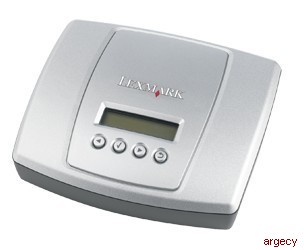 39V1525 | |
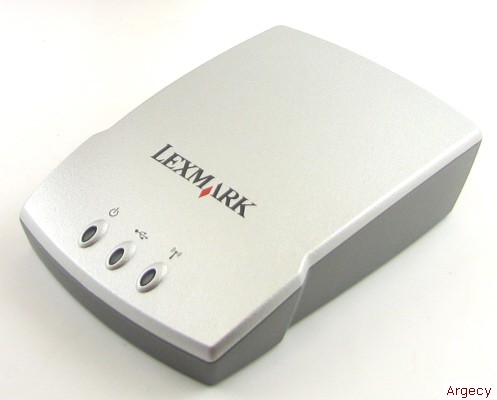 39V1526 | |
 75P6854 | |
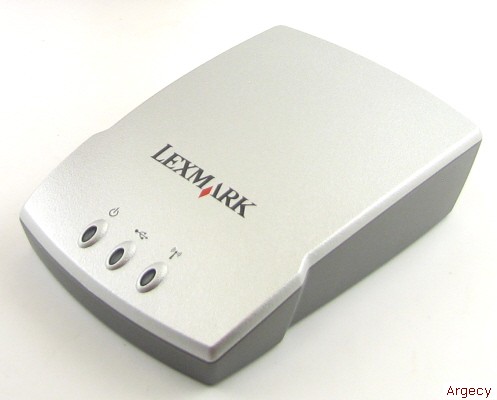 75P6857 |
Description
IBM Infoprint 1540, 1560, and 1580 MFPs are all-in-one multifunction Printers (MFPs) that provide print, copy, scan, and fax functions. All MFPs come with a 625 MHz Freescale processor, a greater than 20 GB hard drive, 256 MB of memory standard, and duplex standard. Maximum memory is 768 MB. All MFPs come with a 10/100Base TX Ethernet, parallel, and USB ports standard.
All models come with two 500-sheet drawers and a dual 2,000-sheet drawer for 3,100-sheet input capacity and 500-sheet output capacity as standard. Maximum input capacity is 5,100-sheets and 3,800-sheets maximum output capacity.
Functionality of the Infoprint 1540, 1560, and 1580 MFPs includes:
- More vivid display
- Intuitive job cancel
- Scan preview
- Job build
- Job interrupt
- Copy countdown
- Auto sensing of mixed sizes
- A3/tabloid size flat bed and Automatic Document Feeder (ADF)
- Print from/scan to flash drive
- Fax redirect
- Network Twain Driver
- Hard drive encryption and "wiping"
- Wireless option
Usage rate
The maximum monthly usage for printing is listed in the following table:
Product Usage
------------------ -------------------
Infoprint 1540 MFP 150,000 impressions
Infoprint 1560 MFP 200,000 impressions
Infoprint 1580 MFP 300,000 impressions
Note: IBM does not recommend printing to these monthly maximums on a consistent basis.
Print quality
The resolutions of the Infoprint 1540, 1560, and 1580 MFPs are:
- 1200 x 1200 dpi
- 2400 Image Quality
- 600 x 600 dpi
The Toner Darkness setting offers 10 user-selectable settings to balance print darkness and toner savings. The higher the setting, the darker the print. Within the range of print darkness settings, up to 50% toner savings can be realized from the factory default setting of 8. The toner darkness setting is available through the operator panel under the Quality menu and also accessible from the print driver.
Font support
The Infoprint 1540, 1560, and 1580 MFPs resident fonts include support for following:
Emulation Number of scalable fonts Number of bitmapped fonts
------------ ------------------------ -------------------------
PCL 6 89 2
PostScript 3 158 0
PPDS 39 5
Operator panel
The operator panel has:
Touch-sensitive GUI plus 17 "hard" buttons and one LED
Color LCD (TFT) with backlight
8.0-inch diagonal display
MFP
Scanner
-------
- Scanner Type Color/Mono Flatbed Scanner with ADF
- Scan Technology Charge Coupled Device (CCD)
- Number of Light Sources 2
- Color bit depth 24 bit
- Max Optical Resolution 600 x 600 dpi (Mono)
- 600 x 600 dpi (Color)
- Scan Area - Flatbed Max. 11.7" x 17.0" (297 mm x 432 mm)
Scanner ADF
-----------
- ADF Type Recirculating duplex ADF with C-Path
- Optical Resolution ADF Max. 600 x 600 dpi (Mono)
- Optical Resolution ADF Max. 600 x 300 dpi (Color)
- Document Capacity 75 Sheets 20 lb. (75 g/m2) Bond
- Media Depth (Thickness) Max. .15 mm
- Min. .05 mm
- Media Weight Max. 32 lb (128g/m2)
- Min. 16 lb (38g/m2)
- Speed - Maximum Mono: Up to 55 SPM
- (Letter/A4 long edge feed) Color: Up to 27.5 SPM
- Scan Area - ADF Max. 11.7" x 17.0" (297 mm x 432 mm)
- Min. 8.25" x 5.5" (210 mm x 139.7 mm)
- Enlargement/Reduction 25-400% capability
Telecommunications approval
This product may connect to a Public Telecommunications Network, as such by country regulations and laws this product may require Telecommunications Approval through country Telecommunications Authority prior to sale.
Accessibility by people with disabilities
For hardware offerings
The following features support use by people with disabilities:
Controls and latches are operable with one hand and minimal dexterity.
Keys are discernible by touch without activating them.
The display, controls, latches, and levers are accessible to someone in a wheel chair.
Color is used as an enhancement for conveying information, and as an additional method of distinguishing between buttons, controls, and latches.
Printer Data Streams
The following data streams are supported:
- PostScript 3 Emulation
- Hewlett-Packard Company PCL 6 Emulation
- PPDS Migration Tool
- PDF v1.5 emulation
Font support
The following resident fonts are supported:
Emulation Number of Scalable Fonts Number of Bitmapped Fonts
------------ ------------------------ -------------------------
PCL 6 89 2
PostScript 3 158 0
PPDS 39 5
Fonts and Symbol Sets
The fonts in the PCL emulation are compatible with the fonts in the HP LaserJet 4550 and include nine additional fonts and many extra symbol sets to support extra languages and applications. Included in the PCL emulation are OCR-A, OCR-B and Code 3 of 9 barcode fonts. The fonts in the PostScript emulation are compatible with all 136 fonts in Adobe PostScript 3 and include 22 additional fonts.
Additional fonts can be downloaded to the MFP RAM, optional User Flash cards or Hard Drive. The PCL emulation supports both scalable and bitmapped downloadable fonts. The PostScript emulation supports only downloadable scalable fonts.
Included on the CD-ROM shipped with the MFP are screen fonts to match the MFP's resident scalable fonts. The CD-ROM also includes a variety of downloadable fonts for Hebrew and Arabic.
Support for the euro currency character is included in all applicable fonts for both the PostScript and PCL emulations. Twelve of the PCL symbol sets support the euro character including all seven Windows symbol sets.
The MFP supports Unicode printing with special UTF-8 encodings in both the PCL and PostScript emulations. UTF-8 encoding is a particular way to access characters that is very useful for fonts with large character sets. UTF-8 is used by our SAP printing solution.
Maximum Print Speed and Performance
The Infoprint 1540, 1560, and 1580 MFPs support the maximum print speeds listed below. Actual performance depends on:
- Interface to host (parallel, serial, USB or network)
- Host system and application
- Complexity and content of the page
- Certain options added to or selected with the MFP
- Available memory in the MFP
- Media size, media type and tray source
- Print Resolution
The table below specifies throughput in pages-per-minute based on resolution and media size. For a complete range of media sizes supported, see Media Supported.
Infoprint 1540 MFP:
2K-Sheet Hi-cap
Media Size Print Mode Tray 1 Tray 2 MPF Tray 3&4 Feeder
---------------- ---------- ------ ------ --- -------- ------
A4 LEF and Simplex 35 35 35 35 35
8.5x11 in. LEF Duplex 35 35 35 35 35
B5 LEF and Simplex 35 35 35 35 35
Executive LEF Duplex 35 35 35 35 35
8.5x5.5 in. LEF Simplex 35 35 35 -- --
and A5 LEF Duplex 35 35 35 -- --
A4 SEF and Simplex 27 27 27 -- --
8.5x11 in. SEF Duplex 27 27 27 -- --
B5 SEF and Duplex 27 27 27 -- --
B4 SEF Simplex 22 22 22 -- --
8.5x13 in. SEF Duplex 14 14 14 -- --
and
8.5x14 in. SEF Duplex 14 14 14 -- --
A3 SEF and Simplex 19 19 19 -- --
11x17 in. SEF Duplex 13 13 13 -- --
Infoprint 1560 MFP:
2K-Sheet Hi-cap
Media Size Print Mode Tray 1 Tray 2 MPF Tray 3&4 Feeder
---------------- ---------- ------ ------ --- -------- ------
A4 LEF and Simplex 45 45 45 45 45
8.5x11 in. LEF Duplex 45 45 45 45 45
B5 LEF and Simplex 45 45 45 45 45
Executive LEF Duplex 45 45 45 45 45
8.5x5.5 in. LEF Simplex 45 45 45 -- --
and LEF Duplex 45 45 45 -- --
A4 SEF and Simplex 32 32 32 -- --
8.5x11 in. SEF Duplex 32 32 32 -- --
B5 SEF and Duplex 32 32 32 -- --
B4 SEF Simplex 29 29 29 -- --
8.5x13 in. SEF Duplex 18 18 18 -- --
and
8.5x14 in. SEF Duplex 18 18 18 -- --
A3 SEF and Simplex 24 24 24 -- --
11x17 in. SEF Duplex 16 16 16 -- --
Infoprint 1580 MFP:
2K-Sheet Hi-cap
Media Size Print Mode Tray 1 Tray 2 MPF Tray 3&4 Feeder
---------------- ---------- ------ ------ --- -------- ------
A4 LEF and Simplex 55 55 50 55 55
8.5x11 in. LEF Duplex 50 50 50 50 50
B5 LEF and Simplex 55 55 50 55 55
Executive LEF Duplex 50 50 50 50 50
8.5x5.5 in. LEF Simplex 55 55 50 -- --
and A5 LEF Duplex 50 50 50 -- --
A4 SEF and Simplex 33 33 33 -- --
8.5x11 in. SEF Duplex 33 33 33 -- --
B5 SEF and Duplex 33 33 33 -- --
B4 SEF Simplex 33 33 33 -- --
8.5x13 in. SEF Duplex 20 20 20 -- --
and
8.5x14 in. SEF Duplex 20 20 20 -- --
A3 SEF and Simplex 28 28 28 -- --
11x17 in. SEF Duplex 18 18 18 -- --
General Statement on Print Quality
Due to the Infoprint 1540, 1560, and 1580 MFP print technology, paper designed for use with xerographic copiers should provide satisfactory print quality and feed reliability. Other types of supplies may be suitable. It is recommended that users test any particular brand for suitability to their applications. Refer to the MFP User's Guide for additional media specifications.
Print Resolution
The following print resolutions are supported:
- 1200 x 1200 dpi
- 2400 Image Quality
- 1200 Image Quality
- 600 x 600 dpi
Toner Darkness
The Toner Darkness setting offers 10 user selectable settings to balance print darkness and toner savings. The higher the setting: the darker the print. Within the range of print darkness settings up to 50% toner savings can be realized from the factory default setting of 8. The Toner Darkness setting is available through the operator panel under the Quality menu and also accessible from the print driver.
Print Quality Settings
The following settings are available to enhance print quality:
Setting accessed by: Operator panel Driver Embedded Web Server
-------------------- -------------- ------ -------------------
Brightness Yes Yes Yes
Contrast Yes Yes Yes
Enhance Fine Lines No Yes Yes
Gray Correction No Yes Yes
Copy Specific Specifications
Detailed first copy out times
Input Mode Size Copy Start State Copy Time
--------- ---------- ------ --------------- ----------
ADF Text/Mixed Letter StandBy/Ready <12.0 sec.
Flatbed Text/Mixed Letter StandBy/Ready <10.0 sec.
ADF Text/Mixed Letter PowerSaver <90.0 sec.
Flatbed Text/Mixed Letter PowerSaver <90.0 sec.
Copy Quality Settings
The following settings are available to enhance copy quality:
Background removal
Contrast
Shadow detail
Darkness
Fax Specific Specifications
Fax Performance
The following table summarizes performance numbers for the Infoprint 1540, 1560, and 1580 MFPs:
Performance
------------------------------------- ------------------------------
Fax Send Transmission Speed - 12KB(1) 3 spp (seconds per page)
(96K Bits) at 33.6KBS
Fax Storage Total hard drive space (20 GB)
Less 1 GB or a total of 4,096
fax jobs
Maximum Group Speed Dials Base on the number of digits in
each raw or group speed dial - no
exact limit
Fax ReDirect E-mail Address Storage 512 characters
Note: (1) Based on ITU-T Test Chart #1 - Text Format Business Letter.
Fax and Telecom Compatibility Information
FAX Compatibility:
-Line Connection PSTN or Analog PABX (RJ-11)
-ITU Compatibility Group 3 / ECM
Standard Resolution 200x100 (Send) 200x100, 204x98 (Receive)
Fine Resolution 200x200 (Send) 200x200, 204x196 (Receive)
SuperFine Resolution 300x300 (Send) 300x300, 204x391 (Receive)
UltraFine Resolution 400x400 (Send) 400x400, 408x391 (Receive)
-Modem
Speed - Standard Max is 33,600 bps, V.34 Half-Duplex
Error Correction Method ITU T.30
Automatic Train Down Yes
-Communications
The modem satisfies the requirements specified in ITU-T (CCITT) recommendations v.34 half-duplex, V.17, V.33, V.29, V.27 ter, V.21 and meets the binary signaling equirements of V.8 and T.30with annex F.
Protocol: ITU T.30
Modulation Type: ITU V.34, V.17, V.29,V.27ter
Tonal Signal: ITU V.8, V.21 T.30
Data Compression T.4 1D Modified Huffman Encoding
T.4 2D Modified Read Encoding T.6 Modified Modified Read Encoding
Modem Speeds: 33600, 31200, 28800, 26400, 21600, 19200, 16800, 14400, 12000, 9600, 7200, 4800, 2400bps
Receive Level: -9dBm -43 dBm
Modem Chipset: Conexant CX86710-12 and CX20493-31
Output Level: Adjustable: -9dBm~-15dBm
Initial Setting: Country Dependent
Line Interface Section
-Modular Plug: RJ-11C
OutBand Signal Level: Guaranteed North American standard and Europe PTT
-Insulation
Resistance (250VDC)
Tip - Ring: Higher than 5 Meg ohms
Tip, Ring-GND: Higher than 5 Meg ohms
Ring Detection: Complies with all regulatory requirements
Dialing Characteristics
-Dial Pulse Not Supported
1) DTMF
Coding Format
1209 Hz 1336 Hz 1477 Hz
697 Hz 1 2 3
770 Hz 4 5 6
852 Hz 7 8 9
941 Hz * 0 #
Retry No Answer 1 Additional Retry
(also if not a fax at the far end)
Busy 0 to 9 Additional Tries
(user programmable, factory default is 5)
Frequency 1 to 200 minutes
(user programmable, factory default is 3 minutes)
Scan Specific Specifications
Scan Performance
The following table summarizes performance numbers for the Infoprint 1540, 1560, and 1580 MFPs:
Scan Speed
TTFS - Flatbed (Text or Text/photo) Letter & A4 Sizes:
Better than 7.0 seconds
TTFS -ADF (Text or Tex/Photo) Letter & A4 Sizes:
Better than 7.0 seconds
TTFS @ Flatbed (Photo or Printed Image) Letter & A4 Sizes:
Better than 7.0 seconds
TTFS @ ADF (Photo or Printed Image) Letter & A4 Sizes:
Better than 7.0 seconds
Sides Per Minute (SPM) (Mono Simplex) Letter - 55
A4 - 55
Sides Per Minute (SPM) (Color Simplex) Letter - 27.5
A4 - 27.5
Sides Per Minute (SPM) (Mono Duplex) Letter - 50
A4 - 50
Sides Per Minute (SPM)(Color Duplex) Letter - 18
A4 - 18
TTFS = Total Time to First Scan: Times will vary based on file size
Scan Features
Job Build from Flatbed
Custom Job from ADF and/or Flatbed
Duplex Scan
25-400% Enlargement or reduction
TWAIN Drivers
Scan Destinations
- Network TWAIN
- USB Thumbdrive
- FTP
- LDSS
- Scan to PC
File Formats
- TIFF
- JPG
Scan Preview
Printer Specifications
Print Area
The Infoprint 1540, 1560, and 1580 MFP printable area is limited to within 4.0 mm (0https://www.argecy.com/images/39V1525.jpghttps://www.argecy.com/images/39V1525.jpg.16 in.) of top, bottom, left or right edges of the media. Any information placed outside this specified printable area will not print.
Media Support
Input Media Combinations and Capacities (sheets)
Standard Standard Standard Optional Total
Aux. Tray Drawer 1 Drawer 2 Drawer 3 Drawer 4 Capacity
--------- -------- -------- -------- -------- --------
Standard 100 500 500 2000 3100
Maximum 100 500 500 2000 2000 5100
Output Media Capacities (sheets)
Optional Optional
Standard Finisher Finisher Total
Output Bin Bin 1 Bin 2 Capacity
---------- -------- -------- --------
Standard 500 500
Maximum 300 500 3000(1) 3800
(Finisher
Installed)
Note: (1) Capacity lowered to 300 when using mixed media.
Media Sizes Supported
Input Media
2000
Std Std Sheet 2000
Tray Tray Dual Sheet
Media 1 2 MPF Input HCF
---------------------------- ---- ---- --- ----- -----
A4 (210x297 mm) Yes Yes Yes Yes Yes
A5 (148x210 mm) Yes Yes Yes Yes Yes
A3 (297x420 mm) Yes Yes Yes No No
JIS-B5 (182x257 mm) Yes Yes Yes Yes Yes
JIS-B4 (257x364 mm) Yes Yes Yes No No
Letter (8.5"x11"] Yes Yes Yes Yes Yes
Tabloid (11"x17"] Yes Yes Yes No No
Legal (8.5"x14"] Yes Yes Yes No No
Executive (7.25"x10.5"] Yes Yes Yes Yes Yes
Folio (8.5"x13"] Yes Yes Yes No No
Statement (5.5"x8.5"] Yes Yes Yes No No
Universal
Length 182 to 431 mm
(7.1 to 16.9 in)
Width 139.7 to 297 mm
(5.5 to 11.7 in)
MPF Only: Yes Yes Yes No No
Length 98.4 to 431 mm
(3.8 to 17 in)
Width 89 to 297 mm
(3.5 to 11.7 in)
7 3/4 Env. No No Yes No No
(98.4x190.5 mm)
Commercial #10 Env. No No Yes No No
(104.8x241.3 mm)
C5 Env. (169x229 mm) No No Yes No No
DL Env. (110x220 mm) No No Yes No No
Other Envelope No No Yes No No
Length 98.4 to 431.8 mm
(3.8 to 17 in)
Width 89 to 297 mm
(3.5 to 11.7 in)
Paper Yes Yes Yes Yes Yes
Cardstock No Yes Yes Yes Yes
Transparencies (letter & A4) Yes Yes Yes No No
Paper Labels Yes Yes Yes No No
Output Media
Finisher Finisher
Standard Upper Lower
Media Output Bin Bin
---------------------------- -------- -------- --------
A4 (210x297 mm) Yes Yes Yes
A5 (148x210 mm) Yes Yes Yes
A3 (297x420 mm) Yes Yes Yes
JIS-B5 (182x257 mm) Yes Yes Yes
JIS-B4 (257x364 mm) Yes Yes Yes
Letter (8.5"x11"] Yes Yes Yes
Tabloid (11"x17"] Yes Yes Yes
Legal (8.5"x14"] Yes Yes Yes
Executive (7.25"x10.5"] Yes Yes Yes
Folio (8.5"x13"] Yes Yes Yes
Statement (5.5"x8.5"] Yes Yes No
Universal
Length 182 to 431 mm
(7.1 to 16.9 in)
Width 139.7 to 297 mm
(5.5 to 11.7 in)
MPF Only: Yes Yes Yes
Length 98.4 to 431 mm
(3.8 to 17 in)
Width 89 to 297 mm
(3.5 to 11.7 in)
7 3/4 Env. Yes No No
(98.4x190.5 mm)
Commercial #10 Env. Yes No No
(104.8x241.3 mm)
C5 Env. (169x229 mm) Yes No No
DL Env. (110x220 mm) Yes No No
Other Envelope Yes No No
Length 98.4 to 431.8 mm
(3.8 to 17 in)
Width 89 to 297 mm
(3.5 to 11.7 in)
Paper Yes Yes Yes
Cardstock Yes No Yes
Transparencies (letter & A4) Yes No No
Paper Labels Yes No No
Media Weights by source
Source gsm Lbs (bond)
---------------------- ------ ----------
Integrated Tray 1 64-105 17-28
Integrated Tray 2 64-216 17-58
MPF 64-216 17-58
2 x 500 Option 64-216 17-58
2000-sheet dual input 64-105 17-28
2000-sheet HCF 64-105 17-28
Duplex 64-105 17-28
Standard Ouput 64-216 17-58
Finisher Bin 1 (upper) 64-105 17-28
Finisher Bin 1 (lower) 64-216 17-58
Output capacity and Finishing capacity
Capacity Empty Full Hole
Output (20lb A4/Ltr) Sensor Sensor Punch Staple Offset
-------------- ------------- ------ ------- ----- ------ ------
Standard Bin 500(1) No Yes No No Yes
Finisher Bin 1 500 No Yes(2) No No No
Finisher Bin 2 3000(3) No Yes(2) Yes Yes Yes
Note: (1) Standard Bin capacity with Finisher installed: Up to 300 sheets.
Note: (2) No Empty or Full sensing fpr Statement and A5 media sizes.
Note: (3) Capacity lowered to 300 when using mixed media.
Media Size and Auto Size Sensing
Sensing Function:
Paper Present: Yes
Output Bin Near Full: Yes
Output Bin Full: Yes
Output Bin Empty: Yes
Misc. Other:
Auto Size: Yes
Tray Low: Yes
Cover Open: Yes
Cartridge Present: Yes
Supplies Low: Yes
Staples Low/Out: Yes
Additional Media Guidelines
Follow the media guidelines below for successful printing:
Paper
Rough, highly textured, limp, or pre-curled papers will result in lower print quality and more frequent paper feed failures.
Colored papers must be able to withstand 220 deg C (446 deg F) fusing temperature.
Preprinted forms and letterheads should be selected using guidelines found in the printer User's Guide. The chemical process used in preprinting may render some papers unsuitable for use with these printers.
Unsuitable papers include multipart forms and documents; chemically treated papers; coated, synthetic and thermal papers; and preprinted papers requiring a high degree of registration.
Recycled paper less than 80g/sqm may cause unacceptable results.
Envelopes
All envelopes should be new, unused, and without package damage.
Envelopes with excessive curl or twist exceeding 6 mm, those stuck together, those with bent corners or nicked edges, or those that interlock should not be used.
Minimum weight: 75 g/m2 (20 lb.)
The following envelopes should not be used:
Envelopes with windows, holes, perforations, cutouts, or deep embossing.
Envelopes with metal clasps, string ties, or metal folding bars.
Envelopes with exposed flap adhesive when the flap is in the closed position.
For best results, printing on new 90 g/m2 (24 lb.) sulfite or 25% cotton bond envelopes is recommended.
Under high humidity conditions (over 60%), envelopes may seal during printing.
Transparencies
Use letter or A4-size sheets only.
Transparencies specifically designed for xerographic copy machines or laser printers may be used with the Infoprint 1540, 1560, and 1570 MFPs.
Labels
Labels should be selected using guidelines found in the User's Reference, Complete Printer Reference, and tested for acceptability. VINYL AND POLYESTER LABELS ARE NOT SUPPORTED. Only occasional paper label use is supported.
Details on Card for IPDS and SCS/TNe Emulation
These affordable Cards for IPDS and SCS/TNe provide configuration flexibility and compatibility for AFP/IPDS or SCS printing over TCP/IP to LAN printers. These Cards for IPDS and SCS/TNe are compatible with IBM mainframe or IBM iSeries applications that generate SCS (LU1) output or with applications that output AFP/IPDS through Print Services Facility (PSF).
IBM continues to make it easy for IS/IT managers to have an affordable printing solution in a distributed network or on a LAN for applications or software that generate AFP/IPDS or SCS. This includes:
PDF417 2D bar code, Data Matrix, MaxiCode 2D bar code support, QR code 2D barcode and the UCC/EAN 128 barcode
Capturing bitmap or outline fonts to hard disk or to flash memory resulting in reduced network traffic over LAN, coaxial or twinaxial connections.
Supports TN3270E or TN5250E SCS (LU1) over the LAN using TCP/IP with Telnet.
No changes to host applications.
Supports emulation of common IBM IPDS and SCS printers.
Additional or new remote controllers with twinax or coax cabling are unnecessary. However, twinax and coax connections continue to be available using the Coax/Twinax Adapter for SCS.
One LAN printer can print LAN (PostScript, PCL, etc) and mainframe or iSeries documents (AFP/IPDS, SCS).
Supports IPDS color commands. The colors are transformed to black or shades of gray, based upon the IPDS menu Color Mode setting.
IPDS N-ups and N-up Explicit Page Placement support. Print 1 to 4 pages per side or up to 8 pages per sheet when printing duplex.
Download DBCS outline and bitmap fonts from the host in IPDS. Support for Simplified Chinese, Traditional Chinese, Korean and Japanese is provided.
Automatic resolution sensing for IPDS when the Host Resolution menu is set to Auto. Selecting Auto allows 240, 300 and 600 dpi resources to be downloaded from the host.
Product Identifier Self Defining Field Information is returned to the host with IPDS. Device type, serial number, MFP code levels and MFP name are returned to the host. These may be displayed at the host to aid in MFP location and maintenance.
With a card and the standard Ethernet network port or a MarkNet print server using TCP/IP, the printer becomes an IBM host workstation printer capable of printing AFP/IPDS or SCS documents from an iSeries or System/390 computer.
With the appropriate host software and one of these options, the IBM printer emulates an IBM mainframe or iSeries host printer. See the compatibility section for details.
With the TN3270E and TN5250E extended Telnet protocol support in these options, the printer emulates one TN3270E printer session and up to 4 TN5250E printer sessions using the LU1 SCS data stream over TCP/IP. This is supported directly from an iSeries or from a mainframe using TCP/IP or through any TN3270E capable gateway that supports TN3270E according to RFC 2355. The DSC/DSE or SCS data streams over LU3 or LU0 are not supported. The Telnet protocol function is only supported with through the standard Ethernet network port or with the MarkNet N2000 print servers. See the compatibility section for more details.
For IPDS emulation, the card supports resident scalable fonts and 300, 600, 1200 image quality or 1200 dpi print resolutions. The resolution is selected through an IPDS MENU setting. This setting determines the print resolution of IPDS text, graphics, bar code, scalable image and scalable font data.
The printer can be configured to take advantage of additional RAM, and when attached to a LAN through the standard Ethernet port or a MarkNet print server, can save IPDS resources to improve performance for complex IPDS print jobs with host resources such as fonts, overlays or page segments.
The IPDS emulation supports the IPDS data and resource towers. Fonts can be downloaded, captured and saved to hard disk or flash memory in the printer. The US Postal Service POSTNET bar code, PLANET barcode and the euro currency symbol are supported within IPDS.
The Euro currency symbol is also supported for the SCS, PostScript and PCL 6 emulations.
Fonts
AFP/IPDS Font and Typestyle Support:
The Card for IPDS supports resident scalable fonts. The font complement with 12 typestyles supports the IBM Font Collection (Core Int erchange Scalable Font Sets - Courier, Times New Roman and Helvetica faces).
The following languages are supported:
Latin 1: Afrikaans, Belgian (French and Dutch), Brazilian Portuguese, Canadian English, Canadian French, Catalan, Danish, Dutch, Finnish, French, German, Icelandic, Italian, Latin American Spanish, Norwegian, Portuguese, Spanish (Castillian), Swedish, Swiss (German, French and Italian), United Kingdom English, United States English
Latin 2/ROECE: Albanian, Croatian, Czech, East German, Hungarian, Polish, Romanian, Serbian, Slovak, Slovenian
Latin 3, 4, 5 and 6: Maltese, Turkish, Estonian, Greenlandic, Lappish, Latvian, Lithuanian
Greek
Cyrillic for: Bulgarian, Byelorussian, Macedonian, Russian, Serbo-Croatian, Ukrainian
The font complement for the IBM Coordinated Scalable Font Set provides support for Latin 1 languages in 3 Letter Gothic (medium, bold and italic) and 3 Prestige (medium, bold and italic) scalable typestyles. Scalable OCR-A and OCR-B typestyles are supported.
The following fonts are supported using bitmaps: APL 12, Boldface PS, Boldface Italic PS, OCR-A 10, OCR-B 10 and Prestige PS. The OCR bitmap fonts have different FGIDs than the scalable font versions.
The IBM 4028 Compatibility Font set consists of 22 fixed pitch typestyles supported by bitmap fonts. Times Roman typestyles (13) are created from Times New Roman scalable typestyles of the same weight and style.
The IBM 3812/3816 Compatibility Font set consists of 35 typestyles supported by bitmap fonts at 240 dpi.
Font Capture
Fonts can also be captured dynamically and saved (cached) to hard disk or flash memory in the printer. A captured font then appears as a printer resident font. If many fonts are used in the jobs that are printed, capturing fonts and saving them in the printer will decrease network traffic on busy networks.
PSF defines fonts as either public or private. In order to capture a font, it must be marked as eligible and public. A private font is not eligible to be captured.
Note: Do not mark sensitive fonts such as signatures and MICR fonts as eligible to be captured. Check the font licensing information before a font is made eligible for capture.
If a font is to be captured, the appropriate files for the coded font or character set and code page resources must all be marked.
The printer must also be defined as capable to capture fonts in PSF. For bitmap fonts, the font resolution of the font captured must match the resolution of the emulated printer for it to be recognized by the printer as a printer resident font. For example, the IBM 3812 and 3816 printer emulations require 240 dpi fonts. The IBM 4028 printer emulation requires 300 dpi fonts.
iSeries
On the iSeries, Font capture is supported by OS/400 V5R2 or later. To define the printer as capable to capture, in the PSF configuration (CRTPSFCFG/CHGPSFCFG), set FNTCAPTURE (*YES).
Eligible fonts must be marked. Display the font attributes to identify marked fonts (DSPFNTRSCA). Verify that *YES is specified for the Font Capture attribute. Use Create Font Resource (CRTFNTRSC) to mark font resources from other systems. Use Change Font Resource (CHGFNTRSC) to mark fonts that are not marked as eligible.
For a font to be eligible for capture, it must have non zero fields for FGID and GCSGID. Any fonts captured and saved in the printer's hard disk or flash memory are saved across instances of the writer.
Mainframe (OS/390 or z/OS):
Font capture is supported by PSF for OS/390 or z/OS. Use APSRMARK to mark eligible fonts if they are not already marked. The IBM Font Collection fonts are already marked as eligible for capture.
SCS Font and Typestyle Support
The SCS emulation uses the default resolution set using the Quality menu from the printer's operator panel. The SCS emulation in the card uses PCL fonts from the printer firmware. If the printer is set to 600 dpi, then all SCS data is printed with 600 dpi PCL fonts. It is possible to imbed PCL and PJL commands into the SCS data stream and pass them to the printer utilizing ASCII transparency.
On the iSeries, fonts can be selected by specifying the FGID (Font Global Identifier) or by characters per inch (CPI). With IBM mainframes, only CPI font selection is possible.
A parameter in the SCS data stream (Final Form Text (Level 2) Document Content Architecture (FFT (L2) DCA)) Page Presentation media (PPM) command is used to control Duplex printing.
These 6 fonts are included in SCS emulation as 300 dpi bitmap fonts: OCR-B (3), Boldface Italic (155), Boldface (159), Essay (160), Essay Bold (163) and Document (175).
Compatibility
For the Card for IPDS and SCS/TNe, IPDS is supported under the IPDS MENU settings and SCS is supported under the SCS/TNe MENU settings.
Note: Microcode updates and User's Guides are available from the IBM web site.
Note: See the appropriate User's Guide for configuration instructions.
Note: When the printer is emulating an IBM printer, the function supported depends on the IBM host software.
For Direct Network Attachment - Hardware Compatibility
When the printer contains an optional Card for IPDS and SCS/TNe, it attaches to a network using one of the following MarkNet print servers:
Standard Ethernet (100BaseTX/10BaseT) Network port in the printer
MarkNet(tm) N2000 Series print servers
MarkNet X2000 Series print servers (AFP/IPDS only)
MarkNet Pro print servers (AFP/IPDS only)
The optional MarkNet print servers support Token-Ring (4Mbps or 16 Mbps), Ethernet 10BaseT/10Base2 and Ethernet 100BaseTX/10BaseT with the following Network Operating Systems: Novell NetWare (including NetWare Directory Services - NDS and NDPS), Microsoft Windows NT 4.0 Server, Microsoft Windows 2000 Server and Advanced Server, TokenTalk and EtherTalk, and the following UNIX platforms: Caldera OpenLinux, IBM AIX, Compaq Tru64 (Digital), HP-UX, Red Hat Linux, SCO OpenServer, UnixWare, SGI IRIX, Sun Solaris, Sun Solaris x86, SuSE Linux and TurboLinux.
Note: MarkNet N2000 microcode level 3.15.x or later is required for SCS/TNe support.
Note: For OptraImage network ports, microcode level 5.15.x or later is required for SCS/TNe support.
Note: Any MarkNet X2000 microcode level provides AFP/IPDS support only.
Note: For IPDS printing, a minimum of 16MB of printer memory is required.
Software Compatibility for AFP/IPDS Printing over TCP/IP
The IBM host software requirements for AFP/IPDS printing when the printer is emulating an IBM 381x, 43xx, 311x or 4028 printer are:
OS/400 V5R2 or later through PSF/400(1)
Note: (1) With OS/400 V5R2, to print IPDS over TCP/IP through PSF/400.
Software Compatibility for SCS LU1 Printing over TCP/IP
The IBM iSeries software requirements for TN5250e SCS (LU1) printing using up to 4 sessions when the printer is emulating an IBM 3812-01 printer are:
OS/400 V5R2 or later with all PTFs applied
Note: Up to four (4) TN5250e sessions from multiple hosts are supported; however the SCS Menu options settings for all 4 sessions are the same.
The IBM mainframe software requirements for TN3270e SCS (LU1) printing using one session when the printer is emulating an IBM 3287 printer are:
IBM Communications Server (CS) for OS/390 or z/OS Version 2 Release 5 or later on ESA systems(2)
TCP/IP for VM/ESA Version 2 Release 4 or later (function level 310 or later)
TCP/IP for VSE/ESA V1 R3 or later using General Print Server Feature
Using Cisco 7500 Series Routers
Note: (2) All appropriate APARs must be applied.
SCS LU1 Printing using a Gateway and TCP/IP
If TN3270E capable SNA gateway software supports the TN3270E protocol according to RFC 2355, then a TN3270e session can be used to print SCS jobs directly from a mainframe or iSeries. Examples of these gateways are:
IBM SecureWay Communications Server 6.0.2 for Windows NT 4.0, Windows 2000, AIX, UnixWare 7, OS/2 Warp
Microsoft NetResults SNA Server 4.0
Novell NetWare for SAA 4 as either a TN3270E Server or TN5250 Server
Attachmate E-Vantage SNA Gateway 2.0
Barr Systems Communications Server
Cisco TN3270 Server
OpenConnect using the WebConnect SNA Access Server or SNA Print Server
Software
Printer drivers are provided on the Drivers, MarkVision, and Utilities CD that is packaged with the printer. See Publications section for details.
The Windows software applications, which operate in the operating systems listed above, are best suited to run with the drivers supplied with the printer. These drivers for Windows take advantage of your printer functions and increase the printer performance wherever possible.
Supported Operating Systems (Printer & Scan Drivers)
Print Network
Driver TWAIN
-------------------------------------------------------- ------ -------
Apple Macintosh(1)
Mac OS 9.x Y N
Mac OS X (10.2, 10.3, or 10.4) Y Y
Microsoft Windows(1)
Microsoft Windows 95 4.00950 (OSR2) or later(3) Y N
Microsoft Windows 98.1st Edition(3) Y N
Microsoft Windows 98.2nd Edition Y Y(6)
Microsoft Windows Me Y Y(6)
Microsoft Windows NT 4 SP6 Y N
Microsoft Windows NT 4 Server SP6 Y N
Microsoft Windows 2000 Professional Y Y
Microsoft Windows 2000 Server Y Y
Microsoft Windows 2000 Advanced Server Y Y
Microsoft Windows 2000 Server running Terminal Services Y Y
Microsoft Windows 2000 Server running Terminal Services Y N
with Citrix MetaFrame XP Presentation Server
Microsoft Windows 2000 Server running Terminal Services Y N
with Citrix MetaFrame Presentation Server 3.0
Microsoft Windows 2000 Server running Terminal Services Y N
with Citrix MetaFrame Presentation Server 4.0
Microsoft Windows XP Home Y Y
Microsoft Windows XP Professional Y Y
Microsoft Windows XP Professional x64 Edition Y Y(6)
Microsoft Windows Server 2003 Standard Edition Y Y
Microsoft Windows Server 2003 Enterprise Edition Y Y
Microsoft Windows Server 2003 x64 Standard Edition Y Y(6)
Microsoft Windows Server 2003 x64 Enterprise Edition Y Y(6)
Microsoft Windows Server 2003 running Terminal Server Y N
Microsoft Windows Server 2003 running Terminal Server Y N
with Citrix MetaFrame XP Presentation Server
Microsoft Windows Server 2003 running Terminal Server Y N
with Citrix MetaFrame Presentation Server 3.0
Microsoft Windows Server 2003 running Terminal Server Y Y(6)
with Citrix MetaFrame Presentation Server 4.0
Novell(2)
Novell NetWare 3.2, 4.2 (bindery) Y N
Novell NetWare 4.2, 5.x, 6.x (NDS) Y N
Novell NetWare 5.x, 6.x with iPrint or NDPS Y N
Novell Open Enterprise Server for NetWare with NDS, Y N
iPrint or NDPS
UNIX(3)
HP UX 11.00, 11.114 Y N
Sun Solaris SPARC 7, 8, 9, 10 Y N
Sun Solaris x86 10 Y N
IBM AIX 5.1, 5.2, 5.3(4) Y N
Linux
SuSE Linux Enterprise Server 8 Y Y
SuSE Linux Enterprise Server 9 Y Y
SuSE Linux Professional 9.1 Y Y
SuSE Linux Professional 9.2 Y Y
RedHat Enterprise WS 3 Y Y
RedHat Enterprise WS 4 Y Y
Debian GNU/Linux 3.0 Y Y
Linspire 4.5 Y Y
Red Flag 4.0 (Simplified Chinese only)(4) Y Y
Limpus 9.2 (Traditional Chinese only)(4) Y Y
IBM AIX Colon Files
IBM AIX 4.3.3, 5.1, 5.2, 5.3 Y N
Other
Virtually any platform supporting TCP/IP5 Y N
IBM iSeries and AS/400 Systems with TCP/IP with OS/400 Y N
V3R1 or later, using OS400 Host Print Transform(5)
-SAP Device Type Support Y N
Note: (1) Download the latest MFP drivers from the IBM Web Site.
Note: (2) IBM Printing Solution is only available from the IBM Web Site.
Note: (3) MFP driver support only. No support for IBM utilities. Driver must be installed using Windows Add Printer Wizard.
Note: (4) Support for these operating systems only available from the IBM Web Site.
Note: (5) Drivers for these operating system not provided by IBM.
Note: (6) Drivers for these operating systems available from the IBM Web Site in 1st half 2006.
The Windows software applications, which operate in the operating systems, listed above, are best suited to run with the drivers supplied with the printer. These drivers take advantage of advanced printer functions and increase the printer performance wherever possible.
NetPnP, Software Installation and Distribution tools are provided on Drivers and Utilities CDs.
MarkVision Professional
MarkVision Professional is a cross-platform print management solution that enables IT administrators to proactively monitor and manage network devises in an enterprise environment via a web browser. It provides IT administrators with realtime device status and information, centralized device setup, remote printer monitoring and management, and asset management capabilities.
MarkVision Messenger
MarkVision Messenger provides real-time notification of printer conditions via e-mail, paging, or other applications and facilitates automated responses to these conditions before they become critical and disruptive to user productivity. MarkVision Messenger enhances administrators' quality for service and improves end-user productivity and satisfaction.
NetPnP
NetPnP senses when a new IBM printer is attached to the network and automatically creates a shared printer object on the Windows NT 4.0 or Windows 2000 system. Furthermore, NetPnP notifies end-users via e-mail that the new network printer is available for printing. Designed for Windows NT 4.0 and Windows 2000 environments, Net PnP makes the Infoprint 1540, 1560, and 1580 MFPs available to end-users within seconds of network attachment.
Software Installation and Distribution Tools
The IBM Script Install utility provides a very powerful method to install or uninstall MFPprinter software in Windows NT 4.0, Windows 2000, Windows XP or Windows Server 2003 environments. Through the use of the Script Install utility, System Administrators can easily perform mass rollouts of IBM printers/MFPs by creating custom scripts to perform local or remote printer/MFP software installations on end user workstations.
When combined with the Driver Profiler utility, I/T shops can centrally create and deploy custom printing environments for each remote location. Together, these utilities drastically reduce the time required to install MFP software in a distributed environment.
Printing Solution for Novell systems
The IBM Printing Solution for Novell systems offers administrators more control over IBM printers/MFPs. This all-inclusive package provides support for both NDPS and iPrint printing systems on NetWare 5.1, 6.0 and 6.5 servers and NOES for NetWare servers. The package consists of Novell's NDPS gateway coupled with IBM's custom control snap-ins for both NetWare Administrator (NWAdmin) and iManager. By offering custom support for both NetWare Administrator and iManager management utilities, this offering allows administrators to take full control of IBM MFPs in a Novell printing environment.
The IBM printers with USB interfaces are certified for USB attachment to Sun Blade workstations and Sun Ray appliances. MarkVision Professional is available from the IBM Web site.
Physical Specifications
Dimensions
Width Depth Height Weight(1)
All MFPs ---------- ---------- ---------- ----------
(without options) 640.0 mm(2) 700.0 mm 1095.0 mm 105.7 kg
(25.0 in) (25.5 in) (43.0 in) (233.0 lb)
Finisher 584.0 mm 660.0 x13mm 1066.0 mm 52.0 kg
(23.0 in) (26.0 in) (42.0 in) (115.0 lb)
High-Capacity 406.0 mm 610.0 mm 381.0 mm 29.0 kg
Feeder (16.0 in) (24.0 in) (15.0 in) (64.0 lb)
Note: (1) Weights for low-voltage and high-voltage models are the same.
Note: (2) Extending MPF tray adds 8.3 in. (210 mm)
Recommended clearances
Left Right Front Rear Top
All models --------- --------- -------- -------- ---------
642.0 mm 1000.0 mm 480.0 mm 200.0 mm 457.0 mm
(25.3 in) (39.3 in) (18.9 in) (7.8 in) (18.0 in)
Operating Environment
Operating environment:
Temperature: 16.0 to 32.0 C (60 to 90 F)
Relative humidity: 8 to 80%
Altitude: 0 to 3,048 meters (10,000 ft)
Storage and shipping environment (packed):
Temperature: -40.0 to 43.3 C (-40 to 110 F)
Relative humidity: 5 to 95%
Altitude: 0.25 atmospheric pressure (equivalent to 10,300 m, 34,000 ft)
Storage environment (unpacked):
Temperature: 0 to 40.0 C (32 to 104 F)
Relative humidity: 5 to 80%
Electrical specifications
Low-voltage models
100 - 127 VAC at 50 to 60 Hz, nominal
90 - 137 VAC, extreme
High-voltage models
220 - 240 VAC at 50 to 60 Hz, nominal
190 - 259 VAC, extreme
Average power consumption
Models
beginning
Printing states with 0
------------------------------ ---------
Off 0 W
Power Saver (sleep) Mode 25 W
Low Power (standby) Mode 95 W
Continuous Printing 760 W
Maximum Current while Printing
120 Volts 12.0 A
230 Volts 8.0 A
Note: Using a 220 VAC to 110 VAC power converter with the low voltage model is not recommended.
Note: All models are ENERGY STAR compliant.
Acoustics
All measurements were made in accordance with ISO 7779 and reported in conformance with ISO 9296.
Sound Pressure Level (dBA)
Mode 1540 MFP 1560 MFP 1580 MFP
-------- -------- -------- --------
Printing 52 53 53
Copying 56 56 56
Scanning 54 54 54
Ready 32 32 32
Sound Power Level (Bels)
Mode 1540 MFP 1560 MFP 1580 MFP
-------- -------- -------- --------
Printing 6.8 6.8 6.8
Copying 7.2 7.2 7.2
Scanning 7.0 7.0 7.0
Ready 4.7 4.7 4.7
Host Software
Windows Custom Drivers
To maximize the user experience, IBM offers custom PCL emulation and PostScript drivers for Windows systems. Custom drivers for Windows provide the most comprehensive set of printing features available for IBM products. Offering an easy-to-use interface and time saving preset features, the IBM custom drivers allow users to access popular MFP features intuitively.
Windows System Drivers
System drivers for Windows provide users with basic printing capabilities for their IBM printers/MFPs. Built on Microsoft technology, system drivers mix key IBM MFP capabilities with Microsoft's rendering engine to provide a solid, no-frills driver. IBM system drivers are available in PCL emulation and PostScript versions. PostScript versions.
MFP Drivers for UNIX and Linux systems
IBM MFP/printer drivers reduce the complications of printing in UNIX and Linux environments. Built on the LPRng printing system, the IBM printer/MFP drivers provide fully scriptable command-line options. When running in X-Windows mode, IBM MFP drivers make it easy to access many popular MFP features without memorizing command line options through a GUI interface.
Printing Software for Macintosh
IBM offers Mac OS printing software (PPDs, PDEs, etc.) to provide a first rate printing experience in an Apple environment. These files allow Mac OS 9 and Mac OS X users access to advanced printing features included with the IBM product. Status Window complements the driver software by providing printer status feedback from a remote location. Other utilities such as File Downloader and IP Settings Utility provide efficient means to perform targeted tasks.
Network TWAIN Scan Drivers
IBM Network TWAIN scan drivers provide remote scanning capabilities to Windows and Macintosh computers. IBM provides Network SANE drivers with remote scanning capabilities for Linux workstations. These drivers allow TWAIN (or SANE) compatible applications to acquire raw scan data directly from a networked IBM multi-function printer.
IBM Infoprint Manager
Infoprint Manager support: Yes (post GA). Requires administrators to create printer objects.
Network Printer Resource Utility (NPRU)
NPRU will not support the Infoprint 1540, 1560, and 1580 MFPs.
TCP/IP Network Port Monitor Utility
This utility will not support the Infoprint 1540, 1560, and 1580 MFPs.
LPR Remote Printing Client Utility
This utility will not support the Infoprint 1540, 1560, and 1580 MFPs.
Special Feature Codes -- Chargeable
PRODUCT NUMBER
Mach Feature Part
type Model number number Description UPC
---- ----- ------- ------- -------------------------- ---------------
4543 001 39V0809 Infoprint 1540 MFP NA (LV) 0-00435-86620-2
4543 101 39V0831 Infoprint 1560 MFP NA (LV) 0-00435-86621-9
4543 201 39V0853 Infoprint 1580 MFP NA (LV) 0-00435-86622-6
39V0945 Finisher 2/3-Hole 0-00435-86805-3
39V0947 High-Capacity Feeder 0-00435-86807-7
39V0875 Card for IPDS and SCS/TNe 0-00435-86686-8
39V0876 Bar Code Card 0-00435-86687-5
Printer Features
All printer features are customer installable.
Input, Output and Other Media Features
The Infoprint 1540, 1560, and 1580 MFP media features include:
(P/N 39V0945) Finisher 2/3-Hole
Minimum required = 0, maximum allowed = 1
Prerequisite = none, Co-requisite = none
(P/N 39V0946) Finisher 2/4-Hole
Minimum required = 0, maximum allowed = 1
Prerequisite = none, Co-requisite = none
(PN 39V0947) High-Capacity Feeder
Minimum required = 0, maximum required = 1
Prerequisite =none, Co-requisite = none
The optional feeder has 2,000-sheet capacity.
Memory and Flash Memory Features
The Infoprint 1540, 1560, and 1580 MFPs has one slot for memory DIMMs and two slots for flash memory cards and application solution cards. Only one flash memory card or application solution card is allowed.
The memory features include the following SDRAM features:
(P/N 75P6986) 128 MB Memory DIMM
Minimum required = 0, maximum allowed = 1
Prerequisite = none, Co-requisite = none
(P/N 75P6987) 256 MB Memory DIMM
Minimum required = 0, maximum allowed = 1
Prerequisite = none, Co-requisite = none
(P/N 75P6988) 512 MB Memory DIMM
Minimum required = 0, maximum allowed = 1
Prerequisite = none, Co-requisite = none
The flash memory features include:
(P/N 75P6989) 32 MB Flash Card
Minimum required = 0, maximum allowed = 1
Prerequisite = none, Co-requisite = none
(P/N 75P6990) 64 MB Flash Card
Minimum required = 0, maximum allowed = 1
Prerequisite = none, Co-requisite = none
Connection Features
In addition to the standard USB port, standard parallel port, and standard Ethernet ports,each MFP has one slot for internal print servers, or optional local connections.
Internal Local Connection Features
The following local connection options are supported:
(P/N 39V0326) Parallel 1284-B Interface Card
Minimum required = 0, maximum allowed = 1
Prerequisite = network model, Co-requisite = none
This card provides a IEEE 1284-B parallel port.
(P/N 39V0327) RS-232C Serial Interface Card
Minimum required = 0, maximum allowed = 1
Prerequisite = none, Co-requisite = none
This card provides an RS-232C serial port.
Cable Features
(P/N 75P7029) 10 Ft. Parallel Cable
Minimum required = 0, maximum allowed = no maximum
Prerequisite = none, Co-requisite = none
For parallel attachment, this cable is recommended for ten feet or less and may be ordered by the customer.
(P/N 75P7030) 2-meter USB Cable
Minimum required = 0, maximum allowed = no maximum
Prerequisite = none, Co-requisite = none
For USB attachment, this USB cable is recommended and may be ordered by the customer.
Network Connection Features
Network cards plug into the one internal interface adapter slot.
Network Cards for Internal Print Server Features
(P/N 75P6992) Ethernet 1000BaseTX
Minimum required = 0, maximum allowed = 1
Prerequisite = base model, Co-requisite = none
This internal Ethernet adapter supports the Gigabit Ethernet standard over CAT-5 cabling.
External Network Cards
(P/N 39V1524) Ethernet 10BaseT/100BaseTX (1 USB port)
Minimum required = 0, maximum allowed = 1
Prerequisite = none, Co-requisite = none
This external print server has one USB port to connect to an Ethernet 10BaseT/100BaseTX network.
(P/N 39V1525) Ethernet 1000BaseTX (4 USB ports)
Minimum required = 0, maximum allowed = 1
Prerequisite = none, Co-requisite = none
This external print server has four USB ports to connect up to four printers to an Ethernet 10BaseT/100BaseTX network.
(P/N 39V1526) Ethernet 10BaseT/100BaseTX (1 parallel port)
Minimum required = 0, maximum allowed = 1
Prerequisite = none, Co-requisite = none
This external print server has one parallel port to connect to an Ethernet 10BaseT/100BaseTX network.
(P/N 75P6857) 802.11G Wireless To Ethernet
Minimum required = 0, maximum allowed = 1
Prerequisite = none, Co-requisite = none
This feature allows the printer to be connected directly to a wireless LAN using the IEEE 802.11g wireless standard. This standard operates at speeds of up to 54 megabits per second (Mbps). The range of this wireless adapter depends on the environment, whether used indoors or outdoors and building contruction. Typical indoor ranges are 20-50 meters and outdoor ranges are 100-200 meters. Performance will degrade with distance. The wireless LAN feature is compliant with any WiFi-compliant device.
The feature is an external adapter that connects to the ethernet port on the printer. The ethernet port can be the standard port that comes on any network model, or an internal ethernet or external print server port. This feature includes a cable that plus into the Ethernet port.
(P/N 75P6854) 802.11G Wireless To USB
Minimum required = 0, maximum allowed = 1
Prerequisite = none, Co-requisite =none
This feature allows the printer to be connected directly to a wireless LAN using the IEEE 802.11g wireless standard. This standard operates at speeds of up to 54 megabits per second (Mbps). The range of this wireless adapter depends on the environment, whether used indoors or outdoors and building contruction. Typical indoor ranges are 20-50 meters and outdoor ranges are 100-200 meters. Performance will degrade with distance. The wireless LAN feature is compliant with any WiFi-compliant device.
The feature is an external adapter that connects to the USB port on the printer.
Network Compatibility
The internal and external network adapters support Network Plug and Print 2.0 on Windows NT 4.0 and Windows 2000 systems.
The Ethernet and Token-Ring print servers and standard Ethernet connections support the following protocols:
TCP/IP
Novell (IPX/SPX including NetWare Directory Services)
AppleTalk**
LexLink** (DLC/LLC)
The TCP/IP standard set of application services including DHCP, WINS, SNMP (industry standard printer MIB), http, lpr/lpd, ftp, tftp, ping, finger, telnet, bootp and rarp. The following protocols are also supported:
IPP: Internet Printing Protocol
SLP: Service Location Protocol
NTP: Network Timing Protocol
The printer with standard Ethernet internal print servers and external print servers support a Resident Web page with Microsoft Internet Explorer 4.0 or later and Netscape Navigator 4.5 or later for Windows 95/98, Windows Me, Windows 2000 or Windows NT.
The remote operator panel is available from internal and external print servers.
Applications Solutions
(P/N 39V0876) Bar Code Card
Minimum required = 0, maximum allowed = 1
Prerequisite = none, Co-requisite = none
The Bar Code Card Card enables the Infoprint 1540, 1560, and 1580 MFPs to print more than forty seven of the most popular industry standard bar codes, including Datamatrix, QR Code, Aztec, microPDF417, PLANET, Codablock F, ITF14, and HIBC128. The Bar Code Card card generates bar codes algorithmically for improved readability.
The Bar Code Card Card emulates HP MFPsprinters with an HP BarCodes 1 More font solution, JetCAPS BarDIMM or JetCAPS BarSIMM (v. 2.0b).
(PN 39V0875) Card for IPDS and SCS/TNe Feature
Minimum required = 0, maximum allowed = 1
Prerequisite = none, Co-requisite = none
This feature is installed in the flash memory/applications solutions slots.
The Card for IPDS and SCS/TNe provides AFP/IPDS and SCS (LU1) data stream support for IBM servers. The Card for IPDS and SCS/TNe allows customers to print AFP/IPDS or SCS(LU1) documents over TCP/IP to LAN printers.
Trademarks
(R), (TM), * Trademark or registered trademark of International Business Machines Corporation.
** Company, product, or service name may be a trademark or service mark of others.
Windows is a trademark of Microsoft Corporation.
UNIX is a registered trademark in the United States and other countries licensed exclusively through X/Open Company Limited.
IBM Corporation 2006.

